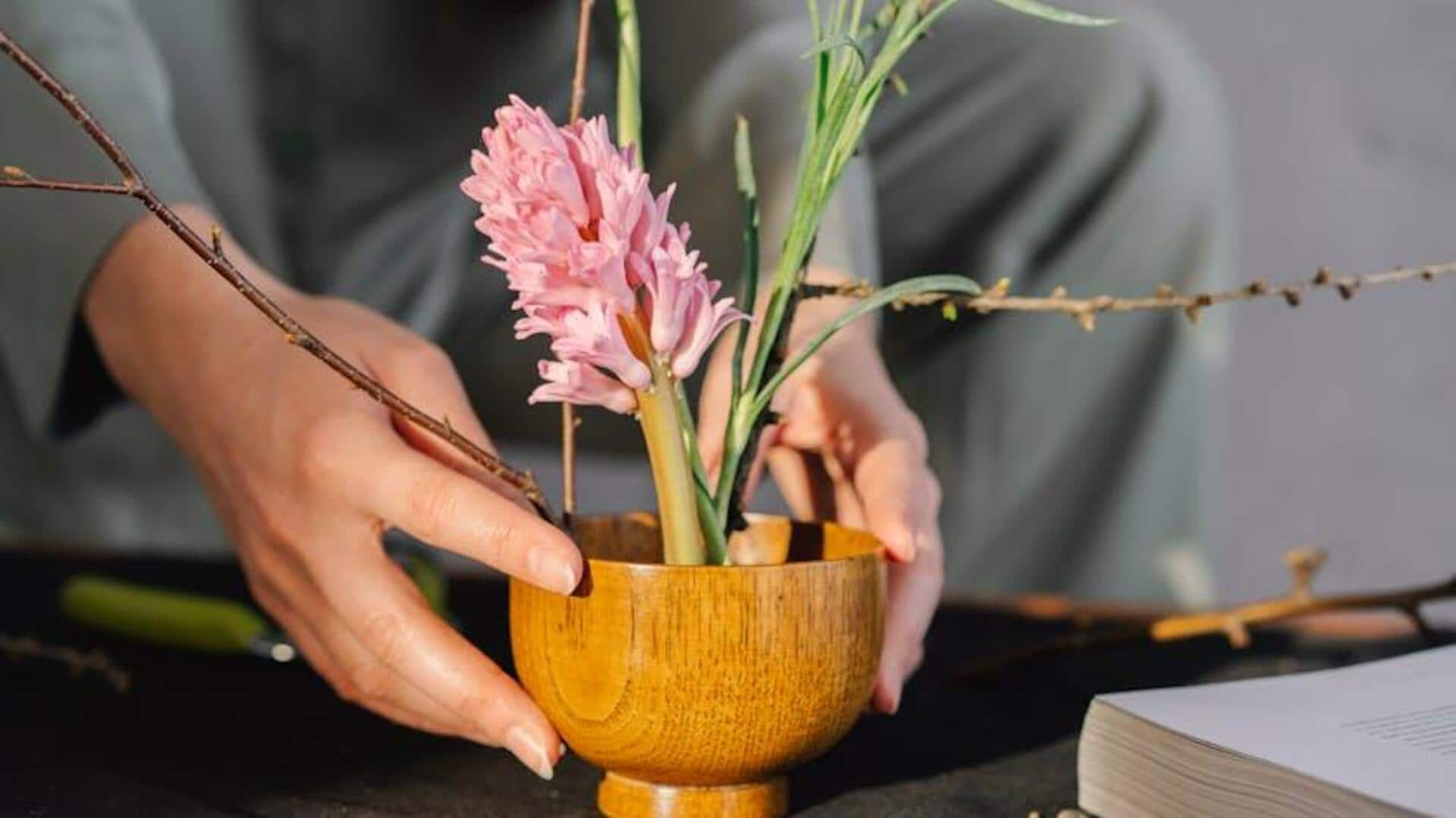
Interesting facts about Japanese ikebana culture
What's the story
Ikebana, the time-honored Japanese art of flower arrangement, is not merely a decorative exercise. It holds a profound cultural significance and exemplifies the philosophy and aesthetics of Japan. Unlike the Western floral arrangements that are more about volume and color, ikebana focuses on harmony, balance, and simplicity. Here, we uncover five hidden facets of this ancient art form that make it culturally unique and significant.
#1
The principle of minimalism
Minimalism is a core principle in ikebana. The art form focuses on using minimal materials to create maximum impact. Each element in an arrangement is carefully selected for its shape, line, and color to convey a specific message or emotion. This minimalist approach encourages practitioners to appreciate the beauty in simplicity and find meaning in every component used.
#2
Seasonal awareness
Ikebana arrangements are closely tied to the seasons. Practitioners choose flowers and plants that capture the essence of the current season. This awareness of the seasons not only adds to the visual beauty but also reinforces one's connection to nature's rhythms. By synchronizing their creations with nature's flow, practitioners celebrate the individuality of each season.
#3
Spiritual connection
Ikebana is often seen as a meditative practice that fosters spiritual growth. The process requires concentration, patience, and mindfulness as practitioners engage with natural materials. This spiritual aspect allows individuals to connect with themselves on a deeper level while appreciating the transient beauty of life represented by flowers.
#4
Asymmetry in design
Unlike the symmetrical designs seen in Western floral arrangements, ikebana celebrates the beauty of asymmetry. This makes the arrangement dynamic and adds movement to it, which is done by placing branches/leaves with flowers intentionally. It keeps the balance/harmony intact, imitating nature's irregularities and imperfections. This is what ikebana stands for, which is deeply-rooted in its philosophy of appreciating every aspect of nature.
Tip 5
Use of negative space
In ikebana, negative space is key, acting as the invisible thread that binds the whole composition. It gives each element its own space, preventing the arrangement from looking too crowded. The mindful use of emptiness enriches the experience of the viewer, bringing attention to every detail without any visual or physical competition. It's a fine balance that emphasizes what is there and what isn't equally.